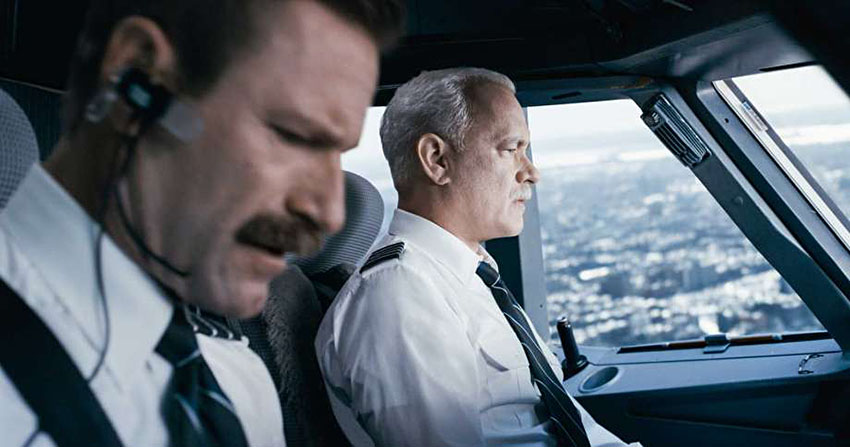January 15, 2009. US Airways Flight 1549 flies through a flock of geese and blows out both engines. Captain Chesley “Sully” Sullenberger (Tom Hanks) turns the aircraft back to La Guardia Airport. But he’s not going to make it; the plane doesn’t have enough altitude. It rapidly descends into New York City and slams into a building.
Sully awakens from his nightmare. He’s still breathing — and heavily.
Clint Eastwood doesn’t portray the actual crash of Flight 1549 on the Hudson until much later in “Sully.” While the event looms over the rest of the plot, mostly through lengthy flashbacks, the film is more concerned with its subject’s inner doubts and his sudden celebrity.
Captain Sully replays the crash in his head, unable to shake the sinking feeling that perhaps his best just wasn’t good enough. Maybe, he fears, he had in fact endangered the lives of everyone on that flight — a question other people are asking, too.
Thus, Captain Sully’s biggest challenge isn’t rescuing the other 154 people aboard his plane, but emerging unscathed from a career-threatening National Transport Safety Board investigation. The NTSB believes Sully acted improperly, citing computer simulations that showed the plane could’ve landed in New York or New Jersey on a tarmac.
The board members are a cartoonishly cruel bunch; it’s almost as if they want the good captain stripped of his wings. They treat Sully and his wisecracking co-pilot, Jeff Skiles (Aaron Eckhart), with unearned hostility, making them look pig-headed for no good reason except to produce drama. Then again, “Sully” would be an awfully boring movie without villains, for the actual events that followed the crash involved a much less cinematic resolution.
Yet, the ever-likable Hanks is fittingly quiet in the role, perhaps a little dull, just like the everyman. He acts and speaks with a humble folksiness that is by now the trademark of his more recent years in film. There’s a slight discomfort in his eyes whenever Sully is greeted by a total stranger who showers praise on him. Hanks makes the movie’s message very clear: Sully may be a hero, but he is also a man who wants to return home to his wife and children.
Eastwood does eventually take us to the crash, presenting it first from an outsider’s perspective, then from within the cockpit. Doing so leaves it up in the air whether Sully made the best decisions, although history outright shows us he did. Nonetheless, you’ll forget what you know when Eastwood sucks you in with his fine direction. Every moment of the crash sequences, from the pilots’ tense realization that their plane is doomed to the cathartic crash in the water, unfolds perfectly. The fear in these scenes is palpable.
During the rescue of the passengers, “Sully” noticeably strays from its subject on occasion to show the uniformed men and women of New York rushing to the aid of the crashed flight as well. Ferry workers, air traffic controllers, paramedics and police officers all play a part, shouldering the lives of Sully’s passengers once he has finished his job. It’s heartening to watch New York’s finest coming together, and “Sully” is very much an ode to them as well.
Cheesy on occasion but nonetheless goodhearted and inspiring, “Sully” is a feel-good movie that sits comfortably among Eastwood’s finer works.
“Sully”
Rating: PG-13
Running Time: 96 minutes
Score: 3.5/5 stars















